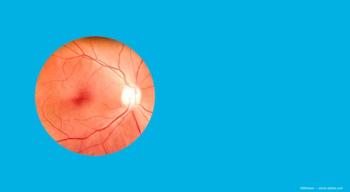
AAO 2025 Takeaways: Cornea, refractive surgery, and aesthetics redefined
Key Takeaways
- Cryopreserved amniotic membrane may improve safety and healing in post-corneal cross-linking care, especially for early keratoconus patients.
- Ray-trace LASIK offers personalized refractive surgery, achieving unprecedented visual acuity and emphasizing patient-specific surgical approaches.
Editor's Note: This content was generated with the assistance of AI.
AAO 2025 delivered major insights into anterior segment innovation, spanning corneal cross-linking care, refractive surgery evolution, and energy-based aesthetic technology. Presentations from Reena Gupta, MD; Arjan Hura, MD; and James Chelnis, MD, FACS, collectively showcased a field embracing personalization, patient comfort, and advanced energy delivery.
Gupta: Amniotic Membrane May Redefine Post–Cross-Linking Care
Reena Gupta’s retrospective study comparing bandage contact lenses versus cryopreserved amniotic membrane (AM) after corneal cross-linking (CXL) provided one of the meeting’s most clinically actionable insights.
The findings were striking:
- 0% postoperative infection rate in the AM group (vs. 1–3% risk with bandage lenses).
- Faster epithelial healing, translating into earlier vision recovery.
- Lower complication risk, particularly valuable for young patients with early keratoconus.
Though patients experience more initial discomfort with AM due to its rigid ring, the overall safety and healing advantages were clear. For advanced keratoconus—where contact lens fitting is often poor—the AM's uniform surface support may offer a safer and more consistent postoperative environment.
Gupta suggested that AM could become a new standard, especially for early keratoconus patients where postoperative complications carry lifelong implications.
Hura: Ray-Trace LASIK and the Rise of Personalized Refractive Surgery
Arjan Hura, MD, presented an exciting refractive milestone: next-generation, ray-trace–enabled WaveLight Plus LASIK, capable of producing unprecedented visual acuity.
Hura noted that many patients now achieve 20/10 vision as early as day one, and importantly—they can perceive the difference from 20/20. The technology accounts for each patient’s optical system in a customized, physics-based manner, representing a new chapter in refractive precision.
Hura emphasized several principles:
- Surgery should match the patient, not the other way around.
- 10–15% of patients seeking surgery are turned away due to mismatch.
- Lifestyle, visual demands, corneal anatomy, and refractive error determine the best procedure.
High myopes may be steered toward EVO ICL for reversibility and nighttime visual quality, while mid-40s patients might be better suited for refractive lens exchange.
His theme was consistent: refractive surgery is becoming more ethical, more customized, and more transparent.
Chelnis: Energy-Based Aesthetics Are Expanding Ophthalmic Practice Safely
James Chelnis, MD, FACS, addressed the booming demand for aesthetic periocular and facial treatments. His course outlined how ophthalmologists can safely adopt technologies like:
- fractional CO₂ and erbium lasers
- IPL platforms for ocular surface disease and pigment correction
- radiofrequency tightening
- ultrasound-based rejuvenation
- dynamic muscle stimulation for blink rehabilitation
Chelnis underscored two keys: deconstructing the patient’s problem and building cross-modality treatment plans. For example, MGD with eyelid laxity may require both meibum-quality improvement and mechanical blink enhancement via dynamic stimulation.
He also emphasized safety infrastructure: laser safety training for all staff, dedicated protocols, and careful device selection based on reputation, R&D investment, and iteration maturity.
A particularly exciting takeaway was how rapidly these technologies are becoming safer for diverse skin types. Chelnis noted that ablative treatments for darker skin, once considered too risky, are now possible with proper platforms.
The AAO 2025 Anterior Segment Takeaway
Innovations in the cornea and ocular adnexa continue to push the boundaries of comfort, customization, and cosmetic integration:
- AM may soon improve safety and healing after CXL.
- Personalized, physics-based refractive surgery is delivering unprecedented outcomes.
- Aesthetic technologies are expanding ophthalmic practice into a broader sphere of patient care.
AAO 2025 emphasized that anterior-segment care is becoming increasingly holistic—blending functional, refractive, and cosmetic outcomes into a unified patient experience.
Newsletter
Don’t miss out—get Ophthalmology Times updates on the latest clinical advancements and expert interviews, straight to your inbox.


















































.png)


